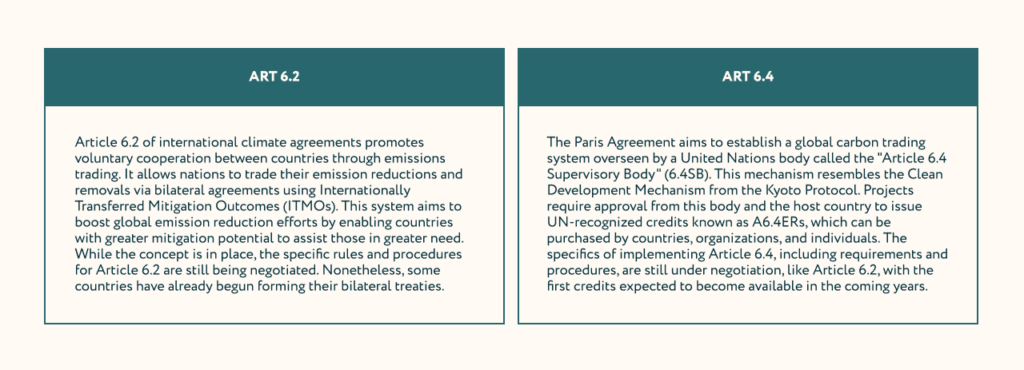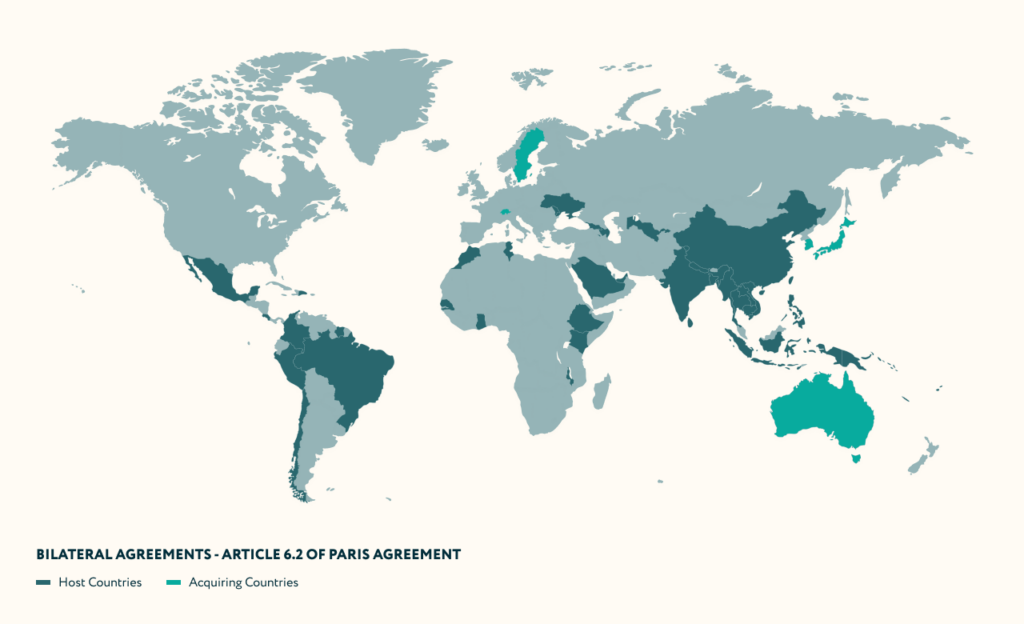PARIS AGREEMENT
The Paris Agreement encompasses the following key elements:
1. Long-term temperature goal (Art.2): The Agreement sets the goal of limiting global temperature increase to well below 2 degrees Celsius and pursuing efforts to limit the increase to 1.5 degrees Celsius. This acknowledges the urgent need for reaching the global peaking of GHG emissions as soon as possible, to later achieve balance and climate neutrality (Art.4)
2. Nationally Determined Contributions (NDCs): Each participating country is required to submit its own voluntary climate action plan called the Nationally Determined Contribution (NDC). These plans outline the country’s targets, strategies, and measures to reduce GHG emissions and adapt to climate change. NDCs are updated every 5 years, with a focus on increasing ambition over time and providing transparency (Art.4)
3. Transparency (Art.13), implementation, and compliance (Art. 15): The Paris Agreement emphasizes the importance of transparency and accountability. Participating countries are required to regularly report on their emissions and implementation efforts, enabling tracking of progress and ensuring transparency in climate actions.
4. Voluntary cooperation / Market-and non-market-based-approaches (Art.6): The voluntary cooperation among the Parties is recognized to allow higher ambition for the international transferal of mitigation outcomes, including environmental integrity, transparency, and credible accounting.
5. Adaptation (Art.7) and loss and damage (Art.8): The Paris Agreement recognizes the importance of adaptation to the impacts of climate change and establishes the Adaptation Committee to promote and support adaptation actions. It also acknowledges the need to address loss and damage associated with climate change impacts in vulnerable countries
6. Climate finance, technology transfer, and capacity building (Art. 9, 10, and 11): Developed countries are committed to providing financial resources to support developing countries in their climate mitigation with a goal of $100 billion annually by 2020. The also promotes the transfer of green technologies in developing countries and the importance of capacity building to effectively address climate change in developing countries.
ARTICLE 6
Article 6 of the Paris Agreement is vital, outlining mechanisms for global climate collaboration. It supports developing nations in achieving NDC targets through suitable financial methods. Given limited public funds, private sector financing is crucial. Notably, paragraphs 6.2 and 6.4 allow authorized emission reductions to aid other countries’ goals, with care to prevent double counting. Additionally, paragraph 6.8 promotes non-market approaches for cooperation in mitigation and adaptation. Essentially, Article 6 forms the bedrock of future carbon markets, addressing issues like double counting and strengthening market reliability.

Since the adoption of the Paris Agreement, negotiations have taken place at various UN climate conferences to finalize the guidelines for implementing Article 6.2 and 6.4 and setting up their operational rules while ensuring environmental integrity, transparency, and equitable outcomes.
Parties are seeking to address these challenges and create a robust framework for international cooperation under Article 6.2 and 6.4. While the countries work towards the implementation of these mechanisms, clear guidelines and strong governance structures are required to ensure effective and equitable collaboration in meeting climate goals.

Figure 1.5. Countries participating in bilateral agreements under Article 6.2 of Paris Agreement
ARTICLE 6 VS KYOTO PROTOCOL
While both the Kyoto Protocol and the Article 6 are the results of significant global political alignment and purpose, they also have important differences in their approach:
GHG coverage:
- Kyoto Protocol covered 21% of global emissions during its first commitment period with 36 mitigating countries.
- Article 6 covers approximately 98% of global emissions with 194 signatories.
Operating logic:
- Kyoto Protocol is a fixed legally binding agreement with overt penalties for non-compliance
- Article 6 adopts a ‘pledge and review’ system
National emissions caps and possible linkages under the Paris Agreement are more ambiguously defined than under Kyoto Protocol.

Figure 1.6. Comparison between Kyoto Protocol and Paris Agreement (Gold Standard. 2017. A new paradigm for Voluntary Carbon Action).
